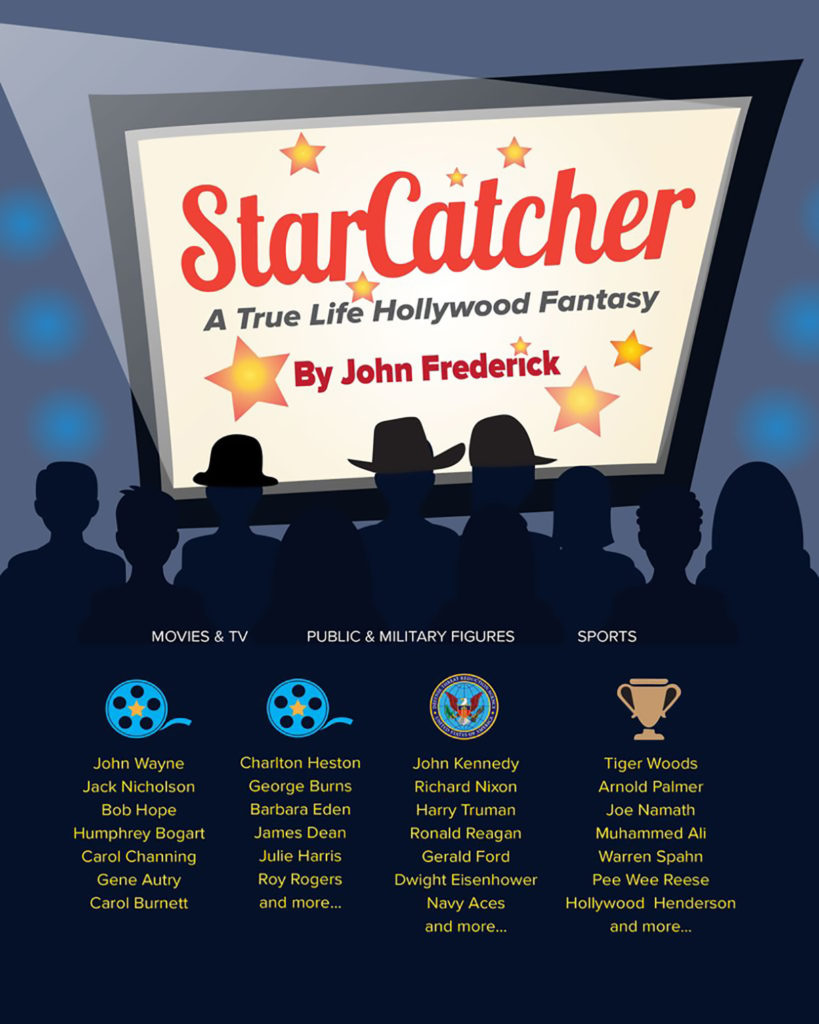Many people think The Shootist was John Wayne’s last film but that really was not the case. The Shootist was his last theatrical release in 1976 – directed by Don Siegel and based on Glendon Swarthout’s 1975 novel of the same name. Home For The Seabees was a film for the US Navy and not a theatrical release. It was produced in 1977. It currently is being shown everyday at the Navy Historical Museum in Port Hueneme, California. Wayne agreed to do this movie because he admired the Seabees since he completed the movie, The Fighting Seabees in 1944. This is part one of a seven part series.
This is the final (well almost final, I had to do a postscript) story on the Navy film and John Wayne’s last film, Home For The Seabees. If you missed what led up to this chapter, then go back and read what it took to get one of the Hollywood Elite to do a movie like this one.
On a beautiful September morning in 1977, John Wayne arrived in a Navy helicopter on the parade grounds at the the Seabee Base in Port Hueneme, California. He was met by a mass of fans. Though I had written much of Wayne’s narration for this film, I really thought my job was done, and was not there for his arrival.
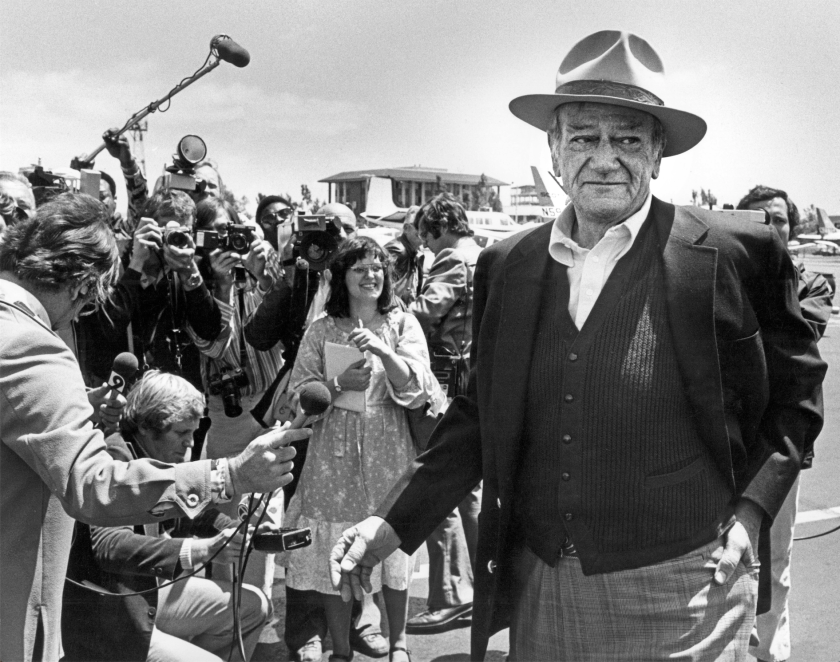
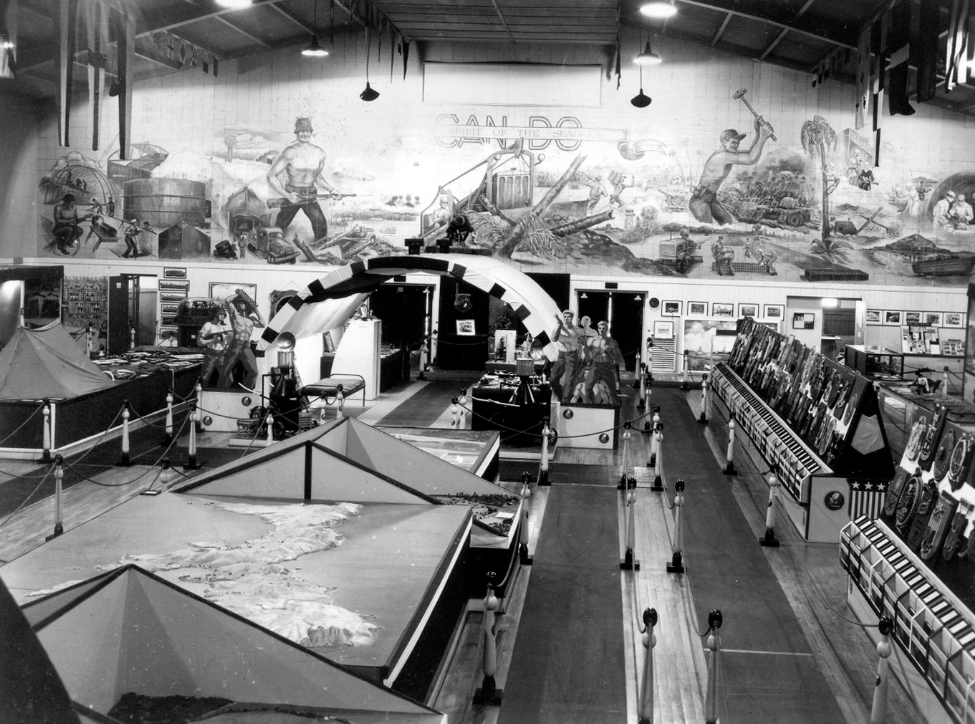
I had brought my wife Sharlene, and our three children to the filming, and I took them straight to the Seabee Museum, where the shooting was to take place. Wayne had already arrived, and was seated in a leather director’s chair that looked like a saddle. I introduced my family to him. He was, as he had always been, very friendly to me and now to my family. We then retreated to the sidelines to watch the show.
The Navy production crew was ready and waiting as the Duke moved about checking things out. I noticed immediately that a larger than life John Wayne, somehow was making the Museum, located in a temporary location that had to have been a warehouse, look small and claustrophobic. Especially when you take into account the select, but too large number of fans that had been invited to witness the production.
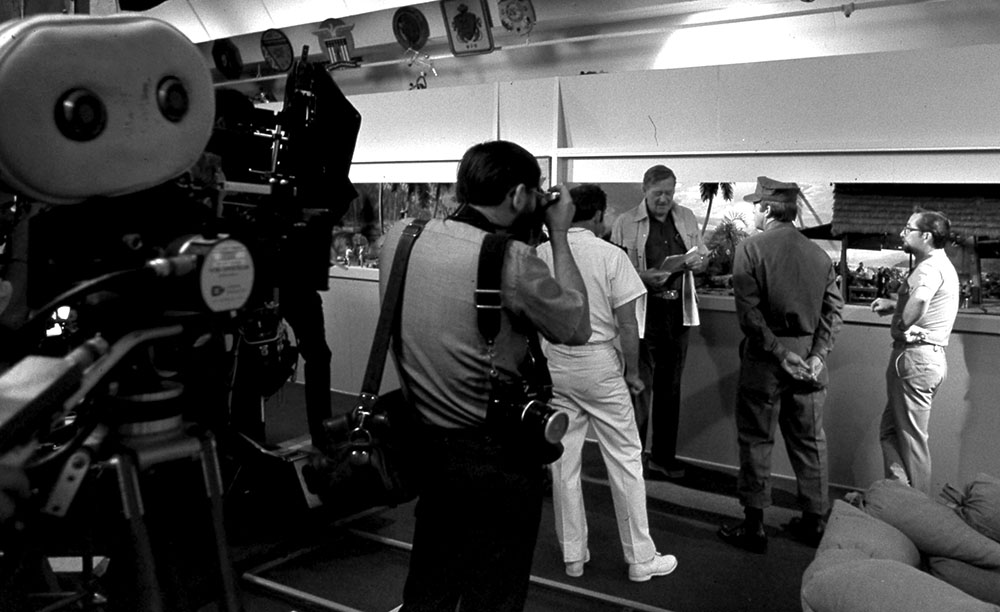

It was soon apparent that there were going to be problems. John Wayne seemed upset. JW was not one to hide his emotions. I decided quickly that discretion is the better part of valor, and moved right along to what the Navy calls “The Head”. I had my hand on the restroom door, when a loud voice boomed out. “Isn’t there anyone with power around here? Where the hell is John Frederick?” “Oh, God,” I thought, “He knows my name.” Wayne was known to, occasionally, have a problem with names. He met so many people after all.
I cursed my luck, as I walked The Last Mile, back to the scene. Upon arrival, I asked him what the problem was, whereupon he launched into an extended exposition, which, thankfully, I have forgotten. I thought for a very long minute, then I said, “Well, what if we did this, and this, and then did that?” He looked right though me. “Yeah, that’ll work,” Wayne said. I breathed a sigh of relief. By now I really had to go to The Head. As I departed, several voices, including that of our Star, were saying it would be best if I stayed close by for the rest of the day.
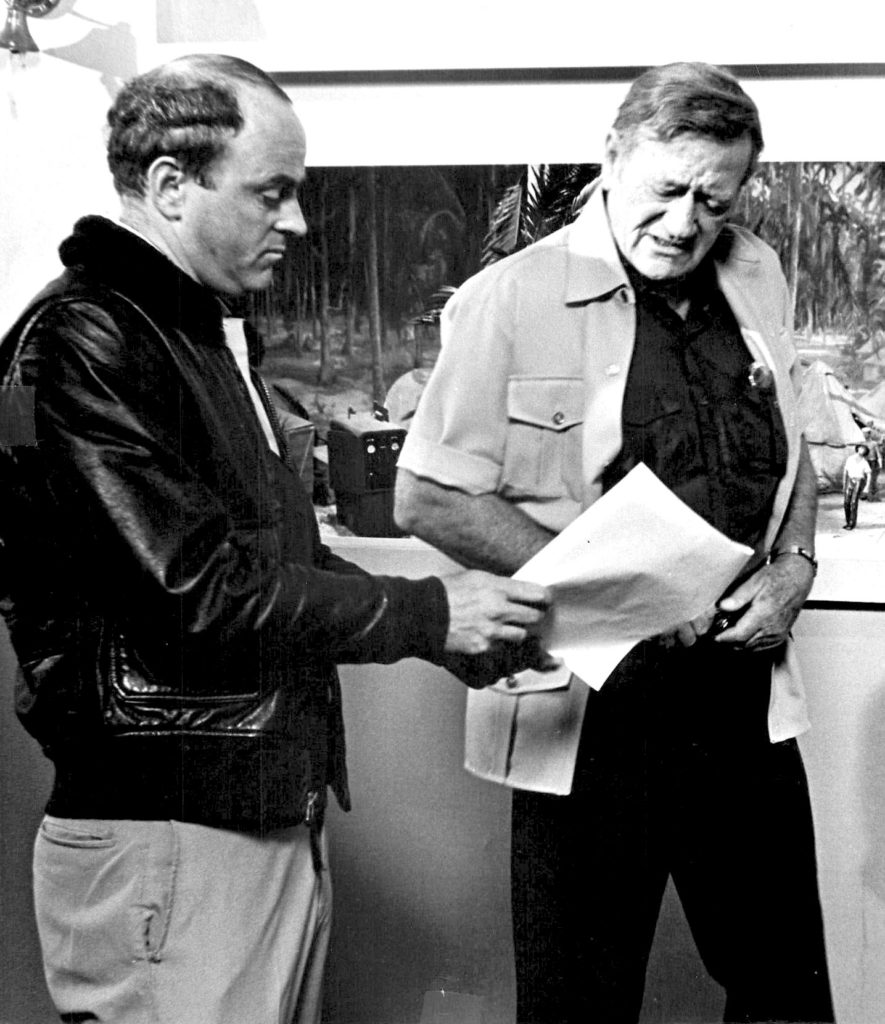

As I returned to the set, I was pleased with myself. I had removed the thorn from the lion’s paw, and all was going well. What had actually happened was that Wayne had gained control. The Seabee brass had sent a high ranked civil servant from Washington to direct the film. His services were not required. Commander Harry Flynn was also the ostensible director. He made many valuable suggestions, but the real director of the film was a guy named WAYNE.
The interior sequences went beautifully, and were completed by mid afternoon. The most important of the exterior shots was the opening of the film, which I had written and was really satisfied with and proud of. Here, Wayne the director really took charge.
He was to stand, in a medium closeup in front of a bulldozer blade. There in the far distance one could see many pieces of heavy equipment. He took charge saying, “Fill the frame…get all that up here…fill the frame.” A photo of the Duke and I shows me doing just that.
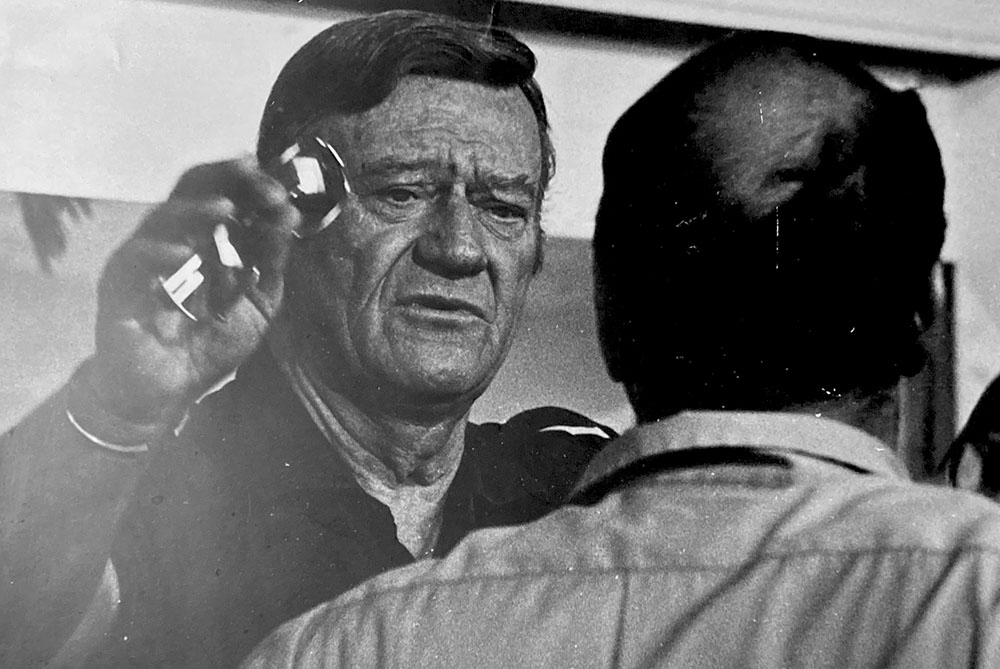

The opening sequence was a good minute and a half or two minutes, and it began like this. Wayne spoke, “These were the builders…good men, hard men that changed the steel and stone face of America…” I shivered as he spoke those words, as he had memorized the whole long speech, and he finished it in one take. When he had concluded, he looked at us and said, “If you wanted it done better than that…’ya better find yourself another actor.”
That would not be necessary, we had heard words spoken directly from the heart. From the very man we had wanted and hoped for all along. And so the Home for the Seabees was now, as they say, “a wrap.” This would be the last movie that John Wayne had ever completed. And at every wrap party we laugh and tell stories about what it took to get the film done. Yet there’s still one more story about the Duke thast I must tell…it’s my postscipt and that’s coming next.
And if you missed any parts of this series, click on the titles below to catch up on what you missed …
Part One: “I’ll Do It For Ya!”
Part Two: The Movie is a Go!
Part Three: “It’s Impossible to be too Close to your Writers”
Part Four: Rewriting the Script for a Hollywood Legend
Part Five: “Who Better to Write for John Wayne than the Duke Himself”
Part Six: Walking the Last Mile
Part Seven: Wrapping Up Production: A Safety Tip From The Duke Himself
ABOUT THE AUTHOR
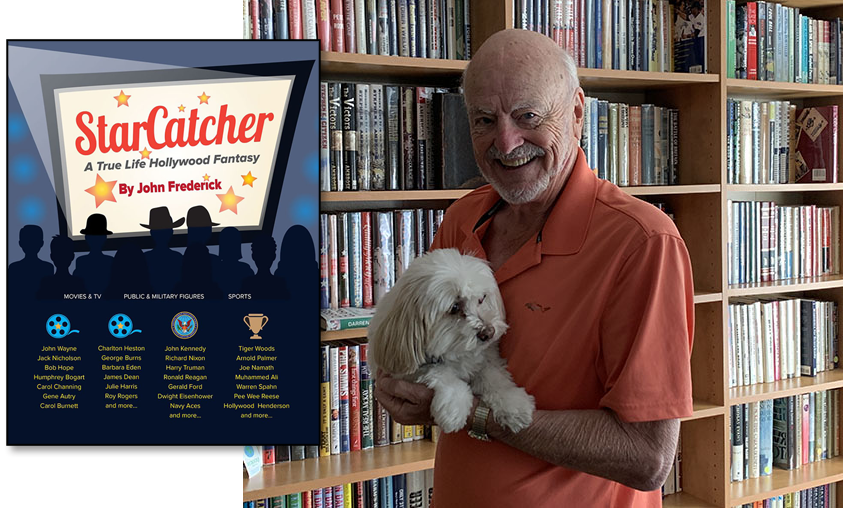
John Wayne was one of the “larger than life” celebrities from the Golden Age of Hollywood. It was my pleasure to work with “Mr. Wayne” (aso I called him) along with many other greats of that era. If you liked this story, you can read more about The Duke and many others I had the opportunity to interact with in my coffee table book Starcatcher: A True Life Hollywood Fantasy. At 83 years old, I decided to bring out the old typewriter and write my first book about my adventures. I found a great publisher who decided to make my book available to all of you! The fine folks at Robert Reed Publishers has the book on sale now with some great information and highlights.


